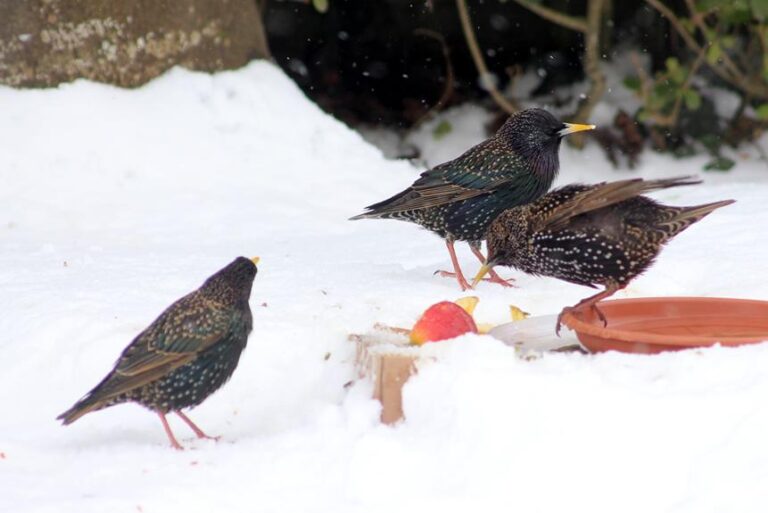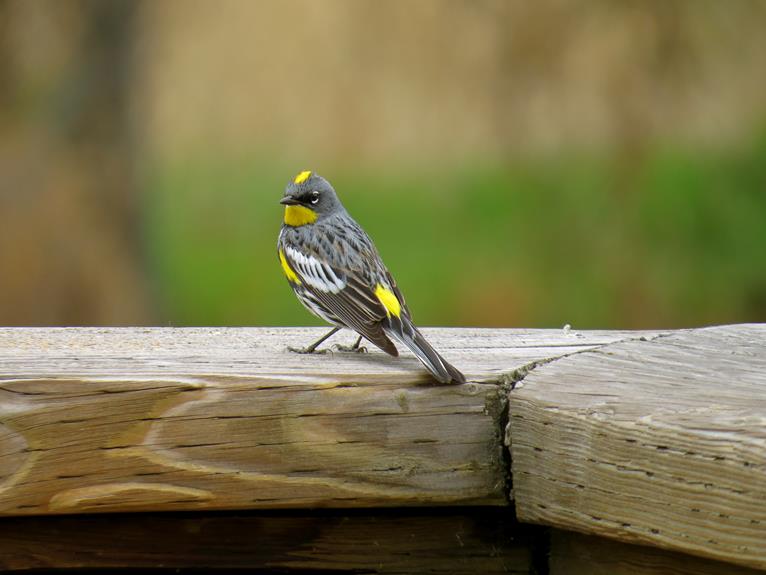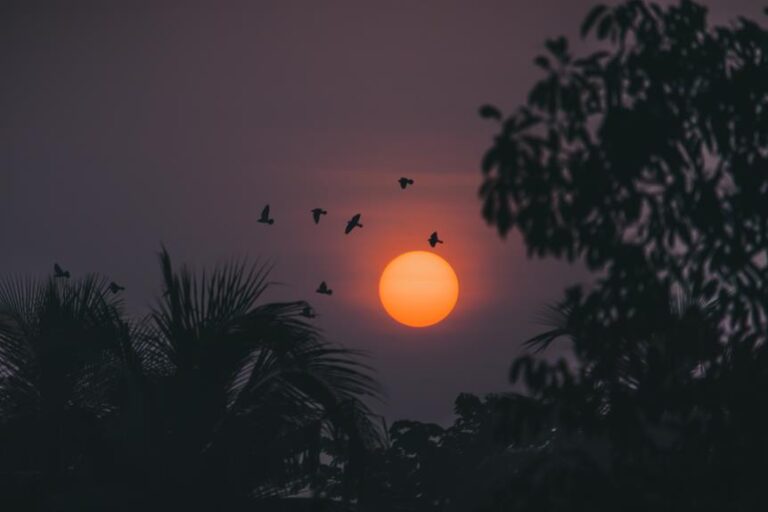Birdhouses serve as vital nesting spaces for various bird species, providing safety and comfort. Understanding the unique needs and preferences of different birds is crucial for attracting them to birdhouses.
Bluebirds, chickadees, owls, woodpeckers, and wrens are just a few examples of birds that utilize birdhouses. Designing and placing birdhouses requires careful consideration of factors such as location, size, and interior conditions.
Additionally, proper maintenance and providing enticing materials can greatly enhance the likelihood of occupancy.
This article explores the specific requirements and strategies for successfully attracting birds to birdhouses.
Key Takeaways
- Different bird species have different requirements for birdhouses, including the size and style of the entrance hole.
- The location of the birdhouse is important, as it should be placed near trees or shrubs for shelter and protection from predators.
- Proper maintenance of a birdhouse includes ensuring adequate ventilation and drainage, as well as placing it in a safe location away from predators and harsh weather conditions.
- To attract birds to a birdhouse, it can be helpful to place it in an area where there are already many birds and to provide bird seed or nesting material inside.
Birds That Utilize Bird Houses
Birds commonly utilize birdhouses as nesting sites, seeking shelter and protection for their eggs and young. Different bird species exhibit unique nesting behaviors and preferences.
For instance, bluebirds lay between 3-7 eggs and incubate them for about two weeks before hatching.
Chickadees have 2 broods per year, laying 4-8 eggs per brood, with the young leaving the nest approximately 18 days after hatching.
Owls prefer to make their own nests inside tree cavities or on ledges.
Woodpeckers, on the other hand, drill their own holes into trees or use existing ones made by other animals, incubating 3-8 eggs for about 2 weeks.
Wrens generally make their own nests, but if using a birdhouse, it should be placed high off the ground. They have 3-5 broods per season with 4-9 eggs per brood.
Birdhouse Design for Specific Species
In the design of birdhouses for specific bird species, it is crucial to consider their unique nesting behaviors and preferences. Different bird species have varying requirements when it comes to the size and design of their nesting boxes.
For example, bluebirds prefer entrance holes that are 1-1/2 inches in diameter, while wrens require smaller holes of around 1 inch to keep out larger birds and predators. Swallows, on the other hand, need slightly larger openings of 1-1/4 inches.
Chickadees and nuthatches can use nest boxes with entrance holes no more than 2 inches in diameter. Purple martins require multiple compartments with entry doors that are 2-1/2 inches wide by 4-3/4 inches tall.
Factors Affecting Birdhouse Usage
Factors such as location, design, and maintenance play a significant role in determining the usage of birdhouses by avian species.
The location of the birdhouse is crucial as it should be placed in an area with nearby trees or shrubs, providing shelter and protection from predators.
The design of the birdhouse should be specific to the bird species it aims to attract. For example, bluebird houses have a 1-1/2 inch entrance hole, while wren houses have a smaller 1 inch entrance hole.
Maintenance is essential to ensure the birdhouse remains suitable for occupancy. Adequate ventilation and drainage should be provided, and the birdhouse should be placed in a safe location away from predators and harsh weather conditions.
Proper Maintenance of Birdhouses
Maintaining birdhouses in good condition is essential for ensuring optimal nesting opportunities for avian species.
Proper maintenance of birdhouses involves several key steps. First, it is important to ensure that the birdhouse has adequate ventilation and drainage to prevent the buildup of moisture and the growth of mold or bacteria.
Additionally, the birdhouse should be placed in a safe location away from predators and harsh weather conditions.
Regular cleaning of the birdhouse is also necessary to remove any debris or parasites that may accumulate over time. This can be done by removing old nesting material and using a mild disinfectant to sanitize the interior.
Tips for Attracting Birds to Birdhouses
To attract birds to birdhouses, it is important to create an inviting environment by implementing effective strategies. One way to do this is by placing the birdhouse in an area where there are already many birds, as they are more likely to investigate and use the birdhouse if they see other birds nearby. Another strategy is to put bird seed or nesting material inside the birdhouse to attract birds. Additionally, it is important to consider the design of the birdhouse, as different bird species have different preferences. For example, bluebird houses should have an entrance hole of 1-1/2 inches in diameter, while wren houses should have a smaller entrance hole of 1 inch in diameter. By following these tips, you can increase the chances of attracting birds to your birdhouses.
| Birdhouse Design | Entrance Hole Diameter |
|---|---|
| Bluebird houses | 1-1/2 inches |
| Wren houses | 1 inch |
| Swallow houses | 1-1/4 inches |
| Chickadees & nuthatches | No more than 2 inches |
Conclusion
- Based on the specific design requirements for different bird species, it is evident that birdhouses can indeed accommodate a variety of birds.
Birdhouse designs are tailored to the needs of specific bird species. Bluebird houses have an entrance hole of 1-1/2 inches in diameter, while wren houses have a smaller entrance hole of about 1 inch in diameter to keep out larger birds and predators. Swallow houses require a slightly larger opening of 1-1/4 inches. Chickadees and nuthatches can use nest boxes with an entrance hole no more than 2 inches in diameter. Purple martin houses have multiple compartments with entry doors that are 2-1/2 inches wide by 4-3/4 inches tall.
- Birds may not use a birdhouse for several reasons. The location of the birdhouse is crucial, as it should be placed in an area with nearby trees or shrubs for shelter and protection from predators. Additionally, the size and style of the birdhouse should match the bird species, and artificial materials like plastic or painted wood should be avoided. The interior of the birdhouse should be lined with soft material for insulation and comfort, with a small hole drilled in the bottom for drainage.
- Proper maintenance of a birdhouse is essential to ensure its functionality. The birdhouse should have adequate ventilation and drainage. It should also be placed in a safe location away from predators and harsh weather conditions.
- To attract birds to a birdhouse, it should be placed in an area where there are already many birds. Additionally, putting bird seed or nesting material inside the birdhouse can help attract birds.
Conclusion
In conclusion, understanding the needs and preferences of different bird species is crucial for attracting them to birdhouses.
By considering factors such as the design, placement, and maintenance of birdhouses, bird enthusiasts can create a safe and comfortable nesting space for various bird species.
Implementing strategies such as providing enticing materials and placing birdhouses in areas with existing bird activity can significantly increase the likelihood of occupancy.
By following these guidelines, individuals can create an inviting environment that encourages birds to utilize birdhouses.






